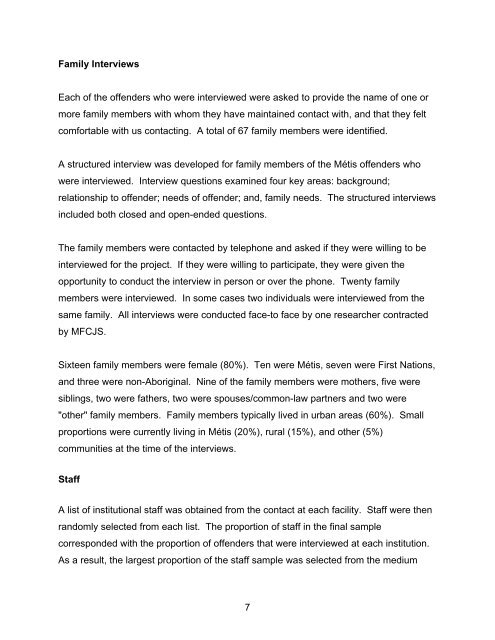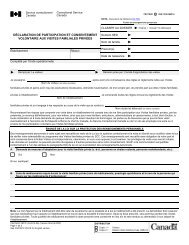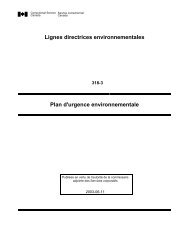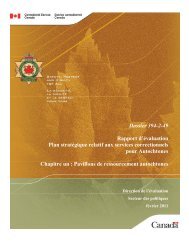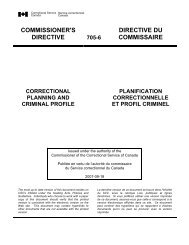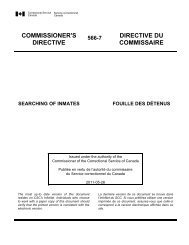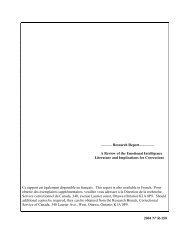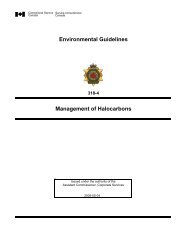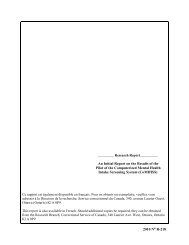Program and Service Needs of Federally Incarcerated Métis ...
Program and Service Needs of Federally Incarcerated Métis ...
Program and Service Needs of Federally Incarcerated Métis ...
Create successful ePaper yourself
Turn your PDF publications into a flip-book with our unique Google optimized e-Paper software.
Family Interviews<br />
Each <strong>of</strong> the <strong>of</strong>fenders who were interviewed were asked to provide the name <strong>of</strong> one or<br />
more family members with whom they have maintained contact with, <strong>and</strong> that they felt<br />
comfortable with us contacting. A total <strong>of</strong> 67 family members were identified.<br />
A structured interview was developed for family members <strong>of</strong> the <strong>Métis</strong> <strong>of</strong>fenders who<br />
were interviewed. Interview questions examined four key areas: background;<br />
relationship to <strong>of</strong>fender; needs <strong>of</strong> <strong>of</strong>fender; <strong>and</strong>, family needs. The structured interviews<br />
included both closed <strong>and</strong> open-ended questions.<br />
The family members were contacted by telephone <strong>and</strong> asked if they were willing to be<br />
interviewed for the project. If they were willing to participate, they were given the<br />
opportunity to conduct the interview in person or over the phone. Twenty family<br />
members were interviewed. In some cases two individuals were interviewed from the<br />
same family. All interviews were conducted face-to face by one researcher contracted<br />
by MFCJS.<br />
Sixteen family members were female (80%). Ten were <strong>Métis</strong>, seven were First Nations,<br />
<strong>and</strong> three were non-Aboriginal. Nine <strong>of</strong> the family members were mothers, five were<br />
siblings, two were fathers, two were spouses/common-law partners <strong>and</strong> two were<br />
"other" family members. Family members typically lived in urban areas (60%). Small<br />
proportions were currently living in <strong>Métis</strong> (20%), rural (15%), <strong>and</strong> other (5%)<br />
communities at the time <strong>of</strong> the interviews.<br />
Staff<br />
A list <strong>of</strong> institutional staff was obtained from the contact at each facility. Staff were then<br />
r<strong>and</strong>omly selected from each list. The proportion <strong>of</strong> staff in the final sample<br />
corresponded with the proportion <strong>of</strong> <strong>of</strong>fenders that were interviewed at each institution.<br />
As a result, the largest proportion <strong>of</strong> the staff sample was selected from the medium<br />
7


